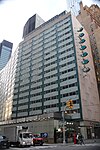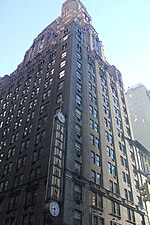Climate Museum
Proposed buildings and structures in New York CityProposed museums in the United StatesScience museums in New York CityUse mdy dates from October 2020
The Climate Museum is a nonprofit organization in New York City and the first museum dedicated to climate change and climate solutions in the United States. Its mission is "to inspire action on the climate crisis with programming across the arts and sciences that deepens understanding, builds connections, and advances just solutions." The Climate Museum presents free exhibitions, art installations, youth programs and other public programs at its seasonal exhibition hub on Governors Island, in public spaces citywide, and through virtual events. The Museum is currently scaling out to a permanent, year-round location in New York City.
Excerpt from the Wikipedia article Climate Museum (License: CC BY-SA 3.0, Authors).Climate Museum
3rd Avenue, New York Manhattan
Geographical coordinates (GPS) Address Nearby Places Show on map
Geographical coordinates (GPS)
| Latitude | Longitude |
|---|---|
| N 40.755658 ° | E -73.971375 ° |
Address
North American Plywood Building
3rd Avenue 800
10035 New York, Manhattan
New York, United States
Open on Google Maps











